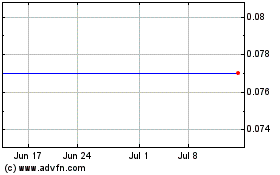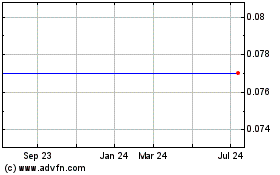Otonomy Reports Positive Results from AVERTS-2 Phase 3 Trial of OTIVIDEX™ in Patients with Ménière's Disease
November 08 2017 - 4:05PM

Otonomy, Inc. (NASDAQ:OTIC), a biopharmaceutical company
focused on the development and commercialization of innovative
therapeutics for diseases and disorders of the ear, today announced
that the AVERTS-2 Phase 3 clinical trial of OTIVIDEX in patients
with Ménière’s disease achieved its primary efficacy endpoint (p
value = 0.029). Otonomy plans to review these results with the U.S.
Food and Drug Administration (FDA) and discuss clinical
requirements for registration of OTIVIDEX for patients with
Ménière’s disease. The company expects to provide an update from
discussions with the FDA during the first quarter of 2018.
Top-line results for the AVERTS-2 trial are as follows:
- The clinical trial achieved its primary endpoint of count of
definitive vertigo days (DVD) by Poisson Regression analysis in
Month 3 for OTIVIDEX vs. placebo (p value = 0.029) based on
analysis of all 174 patients enrolled in the trial.
- The OTIVIDEX group demonstrated a 6.2 day reduction in the mean
reported number of DVD from baseline to Month 3 with a 2.5 day mean
difference between OTIVIDEX and placebo in Month 3.
- For subjects who completed daily diaries through Month 3
(n=105), there was a 68% reduction in vertigo frequency from
baseline to Month 3 in the OTIVIDEX group vs. 40% for placebo.
“The success of the AVERTS-2 trial clearly demonstrates the
treatment benefit of OTIVIDEX in patients with Ménière’s disease,
and these results are consistent with our expectations based on the
Phase 2b trial," said David A. Weber, Ph.D., president and CEO of
Otonomy. “We will complete analysis of this trial and prepare for
discussions with the FDA which we expect to occur during the first
quarter of 2018. We will also further assess the AVERTS-1 trial to
identify factors that might explain the different outcome in that
trial and inform the design of our clinical program to support an
NDA filing."
The AVERTS-2 Phase 3 trial was a four month, prospective,
randomized, double-blind, placebo-controlled trial of patients with
unilateral Ménière’s disease conducted in Europe. Following an
initial one month lead-in period, eligible subjects were randomized
1:1 to a single intratympanic injection of OTIVIDEX or placebo.
Subjects continued in the trial for up to an additional three
months of observation. A total of 174 patients were randomized into
the study with 105 patients completing daily diaries through three
months of post-treatment observation before the trial was
terminated on August 31, 2017. OTIVIDEX was generally
well-tolerated with no drug-related serious adverse events
observed. Webcast
and Conference Call
Otonomy management will review the results during the third
quarter webcast and conference call today at 4:30 p.m. EST. A slide
presentation for the call will be available shortly before the
event on Otonomy’s website on the “Events and Presentations” page
at
http://investors.otonomy.com/phoenix.zhtml?c=234082&p=irol-calendar.
The live call may be accessed by dialing (877) 305-6769 for
domestic callers and (678) 562-4239 for international callers with
conference ID code number: 4495749. A live webcast of the call will
be available online in the investor relations section of Otonomy’s
website at www.otonomy.com and will be archived there for 30
days.
About OtonomyOtonomy is a biopharmaceutical
company focused on the development and commercialization of
innovative therapeutics for diseases and disorders of the ear.
OTIPRIO® (ciprofloxacin otic suspension) is approved in the United
States for use during tympanostomy tube placement surgery in
pediatric patients, an sNDA has been accepted for filing by the FDA
for acute otitis externa (AOE) and a successful End-of-Phase 2
review has been completed with the FDA for acute otitis media with
tympanostomy tubes (AOMT). OTIVIDEXTM is a steroid in development
for the treatment of Ménière’s disease. OTO-311 is an NMDA receptor
antagonist for the treatment of tinnitus that has completed a Phase
1 clinical safety trial. Multiple programs targeting sensorineural
hearing loss including age-related hearing loss are in preclinical
development. These programs involve the anatomical and functional
restoration of ribbon synapses, protection of hair cells from
chemotoxicity, and regeneration of hair cells. For additional
information please visit www.otonomy.com.
Cautionary Note Regarding Forward Looking
Statements
This press release contains forward-looking statements within
the meaning of the Private Securities Litigation Reform Act of
1995. Forward-looking statements generally relate to future events
or the future financial or operating performance of Otonomy.
Forward-looking statements in this press release include, but are
not limited to, plans to meet with the FDA regarding the clinical
development requirements for OTIVIDEX and the timing of any such
meeting, timing of future pipeline updates from Otonomy, and
statements by Otonomy’s president and CEO. Otonomy's expectations
regarding these matters may not materialize, and actual results in
future periods are subject to risks and uncertainties. Actual
results may differ materially from those indicated by these
forward-looking statements as a result of these risks and
uncertainties, including but not limited to: Otonomy's limited
operating history and its expectation that it will incur
significant losses for the foreseeable future; Otonomy's ability to
obtain additional financing; Otonomy's dependence on the commercial
success of OTIPRIO and the regulatory success and advancement of
additional product candidates, such as OTIVIDEX and OTO-311, and
label expansion indications for OTIPRIO; the uncertainties inherent
in the clinical drug development process, including, without
limitation, Otonomy's ability to adequately demonstrate the safety
and efficacy of its product candidates, the nonclinical and
clinical results for its product candidates, which may not support
further development, and challenges related to patient enrollment
in clinical trials; Otonomy's ability to obtain regulatory approval
for its product candidates; side effects or adverse events
associated with Otonomy's product candidates; competition in the
biopharmaceutical industry; Otonomy's dependence on third parties
to conduct nonclinical studies and clinical trials; the timing and
outcome of hospital pharmacy and therapeutics reviews and other
facility reviews; the impact of coverage and reimbursement
decisions by third-party payors on the pricing and market
acceptance of OTIPRIO; Otonomy's dependence on third parties for
the manufacture of OTIPRIO and product candidates; Otonomy's
dependence on a small number of suppliers for raw materials;
Otonomy's ability to protect its intellectual property related to
OTIPRIO and its product candidates in the United States and
throughout the world; expectations regarding potential market size,
opportunity and growth; Otonomy's ability to manage operating
expenses; implementation of Otonomy's business model and strategic
plans for its business, products and technology; and other risks.
Information regarding the foregoing and additional risks may be
found in the section entitled "Risk Factors" in Otonomy's Quarterly
Report on Form 10-Q filed with the Securities and Exchange
Commission (the "SEC") on November 8, 2017, and Otonomy's future
reports to be filed with the SEC. The forward-looking statements in
this press release are based on information available to Otonomy as
of the date hereof. Otonomy disclaims any obligation to update any
forward-looking statements, except as required by law.
Contacts:
Media InquiriesCanale CommunicationsHeidi Chokeir, Ph.D.Senior
Vice President619.849.5377heidi@canalecomm.com
Investor InquiriesWestwicke PartnersRobert H. UhlManaging
Director858.356.5932robert.uhl@westwicke.com
Otonomy (NASDAQ:OTIC)
Historical Stock Chart
From Oct 2024 to Nov 2024

Otonomy (NASDAQ:OTIC)
Historical Stock Chart
From Nov 2023 to Nov 2024
